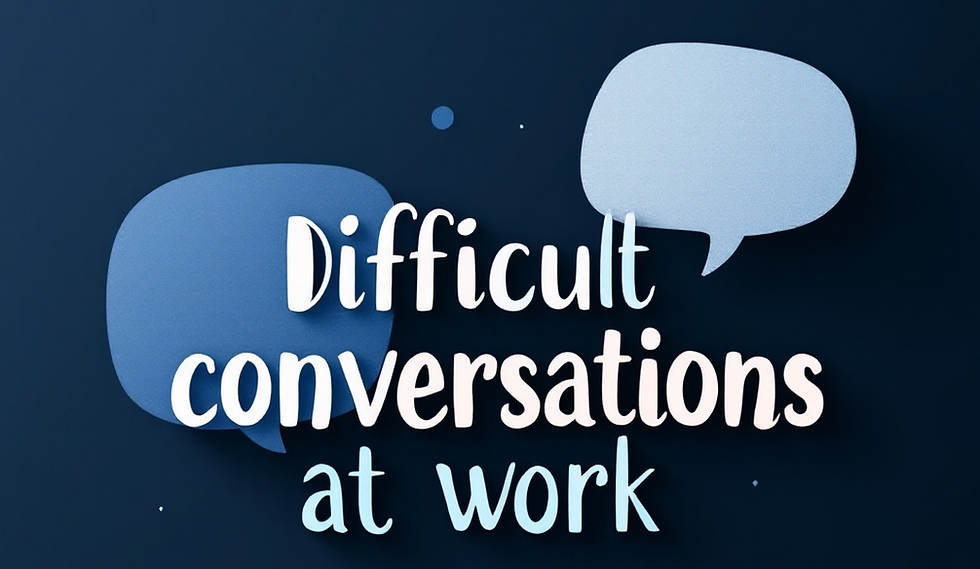The Nuances of Difficult Workplace Conversations: A Two-Way Street
- Elevation Occ Psy

- Mar 18
- 2 min read
Difficult conversations in the workplace are often conflated with delivering bad news. While both require careful handling, they are fundamentally different. Delivering bad news—such as announcing redundancies or performance-related terminations—typically has a predetermined outcome, leaving little room for negotiation. In contrast, difficult conversations, whether about feedback, career development, workload, workplace dynamics, or personal matters, should be approached as open-ended dialogues with opportunities for mutual understanding and resolution.
Beyond the Manager-to-Employee Dynamic
Much of the research and guidance on workplace conversations centres on managers delivering messages to employees. But what about the reverse? Employees also need to initiate difficult conversations—whether about workloads, mental health, physical health, career aspirations, or unfair treatment—yet far less attention is given to their challenges in doing so.
If we are to foster truly open and psychologically safe workplaces, we must explore what employees need to confidently start these conversations. This includes understanding power dynamics, addressing fear of repercussions, and equipping employees with the skills and organisational support to navigate these discussions effectively.
What Employees Need to Speak Up
Research into difficult conversations should go beyond managerial perspectives and investigate:
Psychological safety: Do employees feel safe raising concerns without fear of retaliation or judgement?
Conversational self-efficacy: Do they have the skills and confidence to articulate their concerns effectively?
Support structures: Are there formal channels (e.g., structured feedback systems, coaching, or mentorship) that facilitate these discussions?
Managerial responsiveness: How do managers react when employees initiate difficult conversations? Are they open and receptive, or do they unintentionally discourage dialogue?
Shifting the Focus to Two-Way Dialogue
Rather than assuming difficult conversations are manager-led, organisations should encourage a culture where all employees, regardless of hierarchy, can initiate discussions without fear. Training should not only equip managers with skills to navigate these conversations but also empower employees with the confidence and resources to engage in them proactively.
Encouraging two-way dialogue requires a shift in mindset and organisational practices. Leaders should actively solicit employee input, normalise open discussions about challenges, and demonstrate that speaking up leads to meaningful action. Organisations can foster this by implementing structured feedback opportunities, peer-led discussion forums, and mentorship programmes that empower employees at all levels to voice their concerns and ideas.
As workplace dynamics continue to evolve, organisations that embrace this shift will foster more inclusive, engaged, and communicative teams—where difficult conversations are seen not as obstacles, but as opportunities for growth and progress. By promoting a workplace culture that values dialogue and mutual respect, companies can drive innovation, improve employee well-being, and create a more resilient organisational environment.
How does your organisation support employees in initiating difficult conversations?



Comments